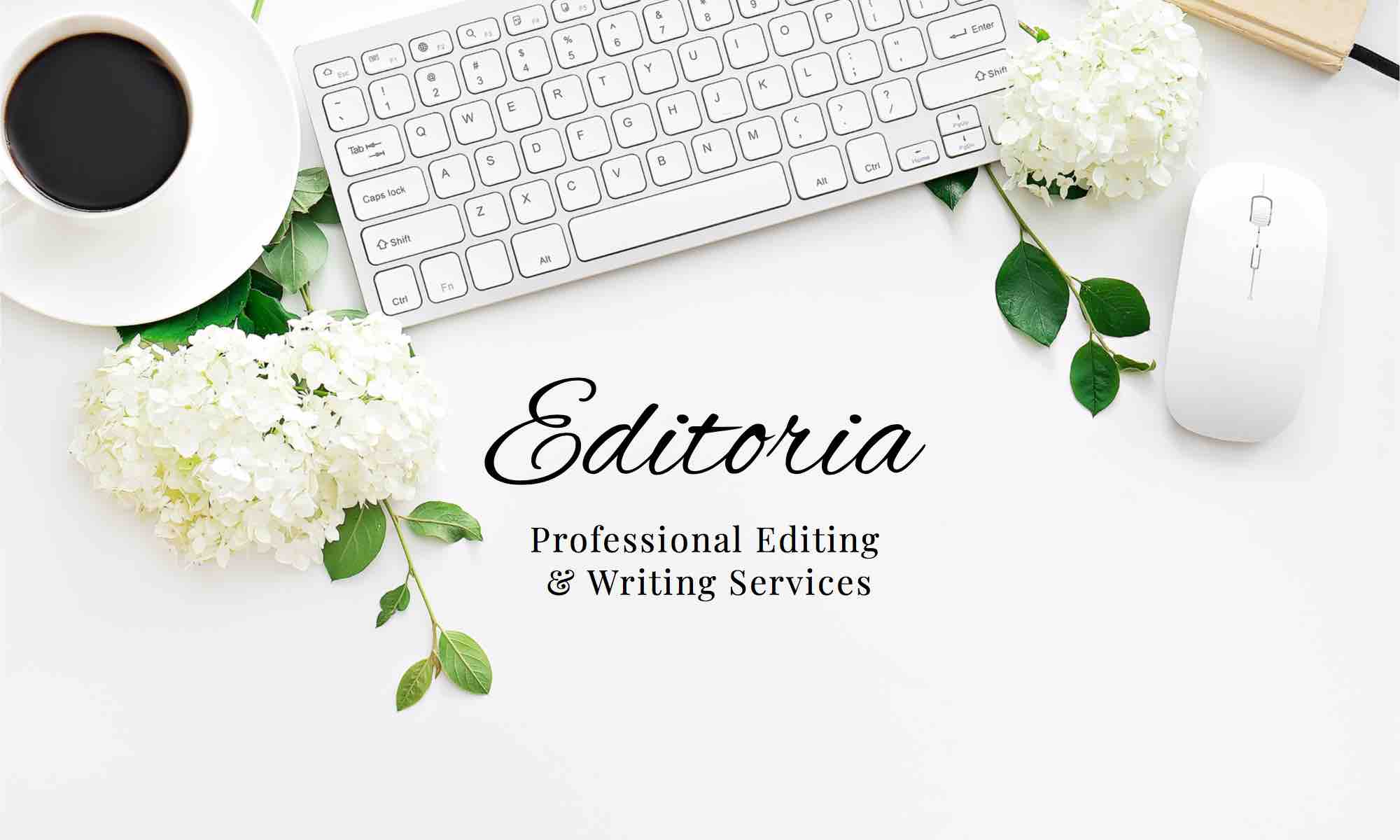Welcome to Editoria
Looking for a personalised editing or writing service? Editoria is a freelance business designed to provide quality editing and writing services for individuals, professionals and small to medium-sized organisations. Our passion is to work collaboratively to create succinct and accurate content that communicates clearly, elegantly and powerfully with its intended audience. We also strive to ensure that all clients receive value for money across every service.
What Editoria can do:
We provide various levels of editing to both professional and amateur writers. All changes or proposed modifications to the original document can be shown with tracked changes in a Word document ready for approval or rejection.
We can also draft a range of written documents such as articles, brochures, letters, newsletters, pamphlets and procedural manuals.
Editoria can edit:
Advertisements
Articles
Brochures & Pamphlets
Business Documents
Educational Materials
Manuscripts – Fiction & Non-fiction
Menus
Newsletters
Reports
Signage & Business Cards
Website Content
Levels of Editing:
Editoria can provide different levels of service, depending on the identified needs of a writing project.
Structural/Substantive Editing
This type of editing looks at the overall structure, clarity, theme, voice, content, coverage, language, and style of a document whilst assessing its suitability for the proposed audience. Structural editing often necessitates some rewriting. Other levels of editing are also usually required before the document is ready for publishing.
During this editing stage, the pace, structural organisation and pitch of the document are all evaluated with reference to the intended recipient. Factual inconsistencies are highlighted, as are areas that challenge clarity and reader comprehension.
Repetition, unnecessary jargon, redundant or irrelevant material, contradictions, wordiness, illogical flow, ambiguity, and awkward phrasing are all identified. Additional material such as titles, glossaries, abbreviations, symbols, headings, tables, figures and other illustrative materials are also checked for accuracy, appropriateness and positioning within the document.
Copyediting/Line editing
At the copyediting stage, grammar, spelling, punctuation, and syntax are checked in detail to ensure clarity. This includes looking at noun/pronoun and subject/verb agreement, and the use of tense and structural parallelism. All documents are appraised for appropriate language use, with any suggested changes maintaining the author’s voice and meaning.
Abbreviations, hyphenation, capitalisation, references, typography, layout, figures, tables and captions, heading hierarchies and expressions of numbers are inspected for consistency and accuracy.
Fact-checking can also be implemented at this stage, if requested.
Proofreading
At the proofreading stage all forms of written documents are evaluated for spelling, typographical and punctuation issues. The document is then assessed to verify that it conforms to the house style nominated by the author. Missed spaces and widow and orphan lines (single lines left hanging at the beginning or end of a page) are identified.
Accuracy in cross-referencing, dates, quotations, hypertext links, bibliographic details, headers, footers, table of contents, captions and diagram labelling are checked, along with consistency in the use of font size, numbering, quotation marks, capitalisation, hyphenation, spelling, abbreviations, acronyms, italics and heading hierarchies.
Preliminary matter (cover, contents page, preface, acknowledgements, illustration lists, copyright and publication information), body text (abstract, text, tables, labels, footnotes/endnotes, captions, illustrative material, and running heads) and end matter (index, glossary, bibliography, lists, and appendices) are all verified to confirm that they are complete. Page numbers are then evaluated for consistency.
Comprehensive Edit
This level of editing involves a combination of each of these editing phases to produce a completed document ready for publishing.
Communication throughout your project can take place via phone calls, email, and Skype, depending on your preference.
To further understand the editing process, follow this link to the Institute of Professional Editors in Australia

 Our Editor:
Our Editor: